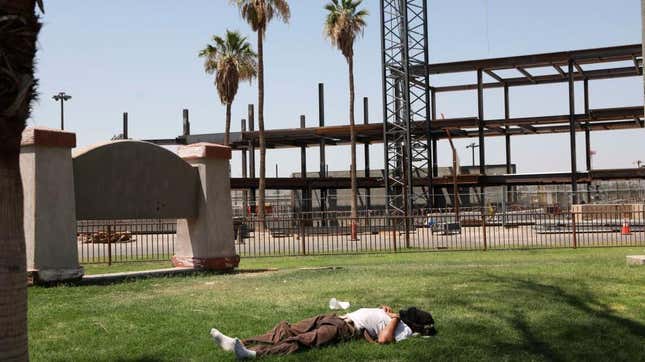
A scorching summer continues in the U.S. as a massive heat dome is slated to affect Southwestern and Central U.S. states. Areas in the region will experience consecutive days of temperatures in the high 90s and low 100s Fahrenheit.
The heat dome, which traps hot air with a “lid” of high atmospheric pressure, is expected to roast states including Texas, Missouri, and Kansas. About 60 million people across the country are under heat alerts, the Washington Post reported. Temperatures 10 to 15 degrees above the usual summer average are expected in the areas that will sit under the dome.
This new heat dome comes after several other heatwaves spread dangerously high temperatures across multiple states in early June and late June. The lack of respite from the heat for many cities puts people at risk of serious health problems. Enough exposure without enough water and access to shade or sufficient air conditioning can lead to dehydration, heat exhaustion, and even heat stroke. This heat dome is especially worrying because some areas will not see nighttime temperatures under 80 degrees—and nighttime heat is particularly worrisome.
National Weather Service Twitter accounts across multiple cities in the region, including Phoenix and Kansas City, have tweeted out warnings that temperatures that may reach over 100 degrees by this weekend. Some social media posts have included things to avoid during a heatwave, like strenuous activities and leaving pets or children in a car.
Extreme heat messes with our infrastructure, too. In June, a California heatwave caused a train to derail near San Francisco, according to an evaluation by Bay Area Rapid Transit. The metal on the rails reached temperatures around 140 degrees Fahrenheit, which is 25 degrees hotter than maximum operating temperature, causing the rails to misalign and derail the train. And a gruesome viral video last month showed rows and rows of dead cattle that were stricken by the stifling heat in Kansas. At least 2,000 cows died, the Kansas Department of Health and Environment told news outlets.